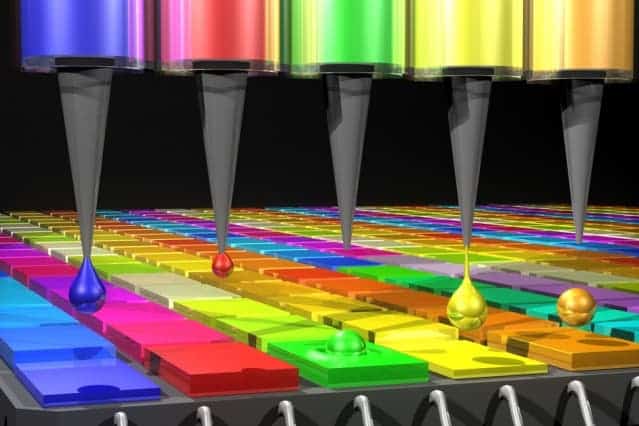MIT engineers demonstrated a working spectrometer that took a huge leap in scale from a huge, bulky lab gear to a portable piece of equipment that’s small enough to fit in a smartphone. Spectrometer are essential to research nowadays, employed in everything from physics, to biology, to chemistry. To design the spectrometer, the MIT team made use of tiny semiconductor nanoparticles called quantum dots. Having a portable spectrometer could prove to be extremely practical .You can use it to remotely diagnose diseases, detect pollution or food poisoning.

The basic function of a spectrometer is to take in light, break it into its spectral components and digitize the signal as a function of wavelength. The information is then read by a computer and shown on a display. Raindrops split a beam of white sunlight into rays of colored light, bending the blueish ones more than the reddish ones to make the well-known arc in the sky. Rain, then, is a brilliant method for separating sunlight. Indeed, the earlier spectrometers consisted of prisms that separate light into its constituent wavelengths, while current models use optical equipment such as diffraction gratings to achieve the same effect. Even so, this kind of equipment is huge. The spectrometer developed at MIT is about the size of a quarter!
The researchers have quantum dots to thank for this achievement. Quantum dots are a type of nanocrystals that absorb light. These are often called artificial atoms because, like real atoms, they confine electrons to quantized states with discrete energies. However, although real atoms are identical, most quantum dots comprise hundreds or thousands of atoms, with inevitable variations in size and shape and, consequently, unavoidable variability in their wavefunctions and energies. This is actually a good thing in this case. The quantum dots are made by mixing various metals such as lead or cadmium with other elements including sulfur, selenium, or arsenic. By controlling the ratio between the materials, you get quantum dots with specific, unique properties.
Nowadays, quantum dots are heavily researched for use in solar panels or for TV displays, since they also fluoresce. While these applications are quite challenging at this stage, quantum dot light absorption is very well studied and as such any spectrometer that uses them can be expected to give out stable results.
The MIT researchers printed hundreds of quantum dots – each absorbing a specific wavelength of light – into a thin film and placed on top of a photodetector such as the charge-coupled devices (CCDs) found in cellphone cameras. An algorithm identifies the percentage of photons absorbed by each dot, then uses this info to compute the intensive and wavelength of the original beam of light. The more quantum dot materials there are, the more wavelengths can be covered and the higher resolution can be obtained. In this case, 200 quantum dots were deployed over a range of 300 nanometers. By adding even more dots, engineers could build a small spectromer that covers the whole range of wavelenghts.
“Using quantum dots for spectrometers is such a straightforward application compared to everything else that we’ve tried to do, and I think that’s very appealing,” says Moungi Bawendi, the Lester Wolfe Professor of Chemistry at MIT and the paper‘s senior author.
Previously, another team from the same MIT unveiled a handheld mass spectrometer. Coupled with this latest news, one might imagine scientists, doctors or hazard control officers using both optical and mass spectrometers in the field quite easily and reliably.


